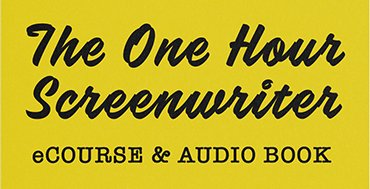Hot Tub Time Machine – Day Thirty Three – #40movies40days


Netflix, for some unknown reason, recommended Hot Tub Time Machine. I took the bait and discovered a raunchy but ultimately sweet tale of friendship, past regrets, second chances and how our past can haunt us.
The movie opens just as Adam (John Cusack) has been dumped by yet another girlfriend. His anti-social video-game-obsessed nephew Jacob (Clark Duke) is camped out in his basement. His friend Lou (Rob Corddry), a burned out alcoholic party guy, has just tried to commit suicide. Another friend, Nick (Craig Robinson), has a dead-end job at a dog spa and an unfaithful and controlling wife named Courtney (Kellee Stewart).
When they check Lou of the hospital they all go back to the Kodiak Valley Ski Resort, a place the guys remember as representing the best and worst times of their lives. A particular evening at the resort seemed to be a turning point for all of them. They arrive to find the present Kodiak lodge in the last gasps of decline, despair and irrelevance– Much like their own lives.


An interesting issue in the film for me was how we misremember our past. We weave a story about what an event means and then that story takes root in our lives and changes us. Perhaps the event never happened that way– or meant something different– or meant nothing at all (it really wasn’t about you but about someone else). We revisit the past constantly (in the Time Machine in our minds). Some things we can change– some things remain the same but we change. It’s all about perception.
What story memories have taken root in my life? How has what I misremember or have misinterpreted in my past changed me? Can I revisit the past yet again and emerge richer and stronger than before because I have the power to make clearer choices or choose the stories that I want to take root in me?


Do you really want to know the truth? Investigate each (part) of your statements (the stories that have take root inside of you) using the four questions and the turnaround below.
Leave out any statement beginning with “but,” “because,” or “and”.
Take only one negative judgment at a time through the process of inquiry. Often you will have several negative judgments about one person (or one situation in the past). Take each judgment separately through the inquiry process.
The Work is a meditation. It’s about awareness; it’s not about trying to change your mind. Let the mind ask the questions, then contemplate. Take your time, go inside, and wait for the deeper answers to surface.
The Four Questions
1. Is it true?
2. Can you absolutely know that it’s true?
3. How do you react, what happens, when you believe that thought?
4. Who would you be like without the thought?
Here is an expansion of how the four questions apply to the statement “Paul should understand me.”
1. Is it true? Is it true that he should understand you? Be still. Wait for the heart’s response.
2. Can you absolutely know that it’s true? Ultimately, can you really know what he should or shouldn’t understand? Can you absolutely know what is in his best interest to understand? (Can you be sure he doesn’t understand you? Do you fully understand him?)
3. How do you react, what happens, when you believe that thought? What happens when you believe “Paul should understand me” and he doesn’t? Do you experience anger, stress, frustration? How do you treat Paul? Do you give him “the look”? Do you try to change him in any way? How do these reactions feel? How do you treat yourself? Does that thought bring stress or peace into your life? Be still as you listen.
4. Who would you be without the thought? Close your eyes. Picture yourself in the presence of Paul. Now imagine looking at Paul, just for a moment, without the thought “I want him to understand.” What do you see? What would your life look like without that thought?
The Turnaround
Next, turn your statement around. The turnarounds are an opportunity to experience the opposite of what you believe to be true. You may find several turnarounds.
For example, “Paul should understand me” turns around to:
• • •
Paul shouldn’t understand me. I should understand me. I should understand Paul.
Let yourself fully experience the turnarounds. For each one, find at least three genuine, specific examples in your life where the turnaround is true. This is not about blaming yourself or feeling guilty. It’s about discovering alternatives that can bring you peace.
More on Bryon Katie’s The Work here: http://www.thework.com/index.php




Create a visual map for a character’s emotional journey. Pull stories from character rather from rote story structure beats. Some of the largest international media companies, use this in story and character development.


A clear concise guide for writers and producers to have by their side as they embark on a project. It gives a really vital reminder of what is key for story success.

No comment yet, add your voice below!